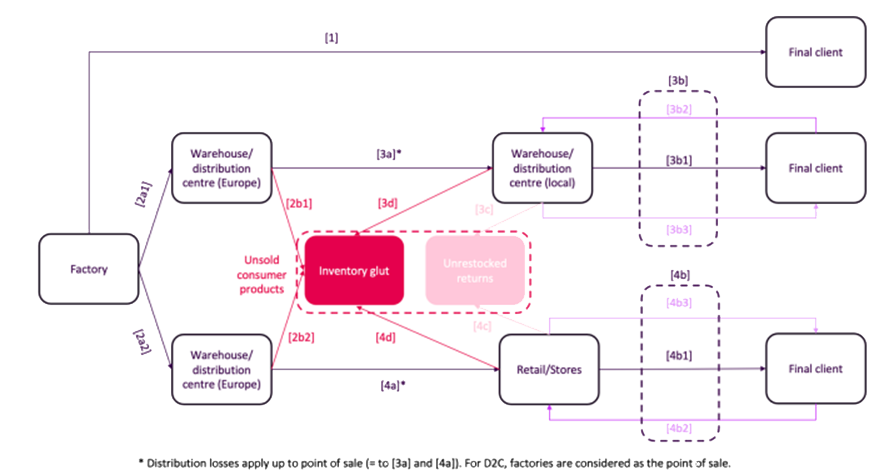Centralized Distribution Scenarios
For PEFCR A&F v2.0 Compliance
To meet the latest PEFCR A&F v2.0 requirements, we are introducing a major update: distribution fields previously included in product forms are now centralized at the organization level. This change ensures consistent application across all product forms and reduces repetitive data entry.
Key updates
1/ Distribution Fields Moved to Organization-Level Settings
These fields ensure better representation of distribution impacts, particularly for products sold on the European market.

Previously included fields:
- Percentage of sales in-store
- Percentage of sales via e-commerce (D2C scenario)
- Percentage of sales via e-commerce (classic scenario)
- Percentage of returns (in-store scenario)
- Percentage of returns (e-commerce scenario)
- Distribution losses
New fields added:
- Restock rate in-store: Percentage of items restocked in physical stores.
- Restock rate e-commerce: Percentage of items restocked in e-commerce scenarios.
2/ Distribution Life Cycle Stage Updates
The distribution stage accounts for the impacts associated with transporting final products (e.g., apparel, footwear) to the final client, including intermediate storage. Updates reflect commonalities across product categories, as distribution models are not necessarily product-specific.
Three distribution models are included:
- Direct-to-Consumer E-commerce: Products delivered directly to clients.
- Classic E-commerce: Products transported via warehouses and distribution centers, excluding physical stores.
- Retail Scenario: Products transported to and sold in brick-and-mortar stores.
Considerations for unsold products:
- Unrestocked items: Products sold and returned by consumers but not restocked.
- Inventory glut: Surplus or overstock items retained at points of sale (e.g., local warehouses or stores) or European distribution centers.

How it works
With these updates, distribution scenarios are managed centrally, eliminating the need to input repetitive data for individual product forms. This ensures:
- Improved Consistency: Organization-level settings provide a unified approach to managing distribution impacts.
- Greater Efficiency: Streamlined workflows reduce repetitive data entry, saving time.
- Precise Calculations: Centralized fields ensure better alignment with the latest PEFCR A&F v2.0 standards.

